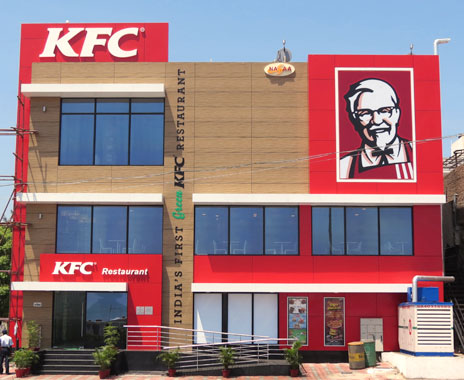Yum! Brands Inc. recently released its 2014 Corporate Social Responsibility (CSR) Report, detailing the company’s progress in four areas: food, people, the community, and the environment.
The Louisville, Kentucky–based parent company of Taco Bell, KFC, and Pizza Hut shared the progress it has made toward goals it created in each category, which range from making all new company-owned restaurants LEED-certifiable to phasing out palm oil in its menus and strengthening corporate culture for its 1.5 million employees and franchisees.
“We talk a lot about building three iconic brands that people trust and champion all over the world,” says Laurie Schalow, vice president of corporate social responsibility at Yum. “We’re making progress, focusing on the high quality and integrity of our products and services that consumers and stakeholders—which include our employees and franchisees—can get behind.”
Yum continues to work toward improving nutrition at its 41,000 restaurants worldwide, notably through covert sodium reductions over the past several years. By the end of this year, the brand is also aiming for 15 percent of menu items to meet one-third the Recommended Daily Allowance (RDA) in every country in which it operates, and 20 percent by 2020, Schalow says.
But as a brand whose restaurants aim to be somewhere consumers can eat everyday as opposed to occasionally, Yum’s efforts aren’t ambitious enough, says Arlin Wasserman, founder and partner at Gaithersburg, Maryland–based consultancy Changing Tastes.
“The decision to achieve 15 percent menu items meeting RDAs and moving on to 20 is laudable given that Yum started at a place of unclear performance, though my guess is they were pretty close to 15 before they started,” Wasserman says. “But it doesn’t represent a very ambitious move. Rather, it says, ‘We’re responsible, but only if you eat with us occasionally.’ It’s contrary to their business goals of serving guests several times a week or more.”
Schalow says Yum was the first restaurant company to call on Congress to institute federal menu-labeling laws, but the brand has yet to implement calorie counts on menus. She says the brand “will be ready” whenever the regulations are finalized.
New this year was Yum’s pledge to switch to 100 percent sustainable palm oil in its restaurants by 2017. The brand originally planned to eliminate palm oil altogether—about 70 percent of its restaurants have done so—but instated the sustainable palm oil policy for “outlier restaurants” that likely can’t meet the 2017 deadline, Schalow says. As restaurants tinker with market-specific replacements like soybean oil blends and canola, getting the flavor just right is key for products like KFC’s iconic fried chicken, she adds.
In an effort to improve Yum’s environmental impact, all new company-owned restaurants will be LEED certifiable starting this year. The company has 20 such restaurants open in nine countries worldwide; overall, the company opens roughly 2,500 new restaurants each year, Schalow says.
The brand also aims to reduce energy consumption in company-owned restaurants by 15 percent by year’s end. In 2014, it achieved a record 530 million kilowatt hours in savings, and has seen a 1.2 million metric ton reduction in CO2 since 2009.
Yum is admittedly behind on its water conservation goals, however, which aim to reduce water consumption in company-owned restaurants by 10 percent before the end of the year. Schalow says that the challenge for a brand Yum’s size is collecting data at the individual restaurant level.
“It’s a challenge to collect data by looking at individual metering and bills and collecting usage and converting that depending where it is in the country and around globe,” she says, adding that green building elements have to be proven first in equity stores before they’re adopted at franchised restaurants.
Wasserman says water conservation goals could more easily be met through modest changes in formulation.
“If you look at the water consumption necessary to serve a meal, the majority of it—60 or 70 percent—is consumed in the production of food and a relatively modest share in restaurants,” he says. “One could say they’re going to become excessively water efficient in the restaurant by buying better equipment, aggressively calling the maintenance team when there are drips, being more thoughtful with spray-nozzle use, or taking three circles of pepperoni off their pizza. And no one would notice.”
The company’s philanthropic efforts (which were the original impetus for creating a CSR Report) remain globally centered on hunger relief. “Since we partnered with the World Food Programme in 2007, we’ve donated more than $600 million, which equates to 2.4 billion meals,” Schalow says.
Employees and franchisees are also encouraged to engage in charitable causes at the local level, which helps get them positively involved in the company, she adds.
Elsewhere, Yum looks to build on its “recognition culture” of rewarding employees at all levels by emphasizing training programs and offering advancement opportunities from the entry through managerial levels. The company was recently named one of the Aon Hewitt Top Companies for Leaders in North America.







